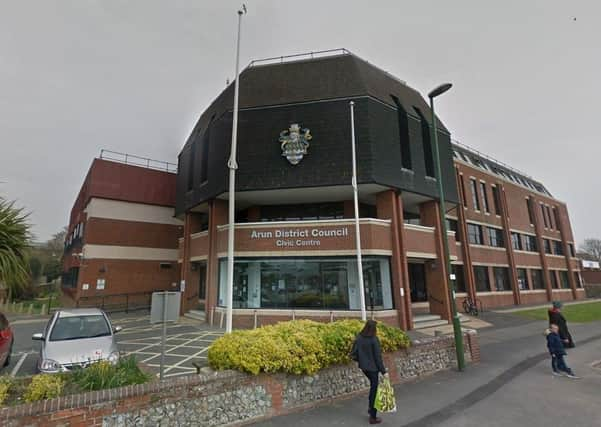Proposed planning system changes are ‘hugely concerning for Arun’, says council


Arun District Council would see its housing requirement increase by 52 per cent to over 2,000 dwellings a year under the proposals put forward by the Government.
The council has submitted its response to the eight-week ‘Changes to the Current Planning System’ consultation, which closes on Thursday.
Advertisement
Hide AdAdvertisement
Hide AdThe council’s response was put together by Councillor Martin Lury, Cabinet Member for Planning, who questioned how the Government-increased target of 337,000 homes per year has been calculated and why nearly all of this increase is located in the south east.
It also questions whether such targets are realistic in terms of the methodology used to come up with the figure and the deliverability of this figure.
Arun has over 4,000 dwellings with planning permission, with an average of only 600 a year being delivered by the developers, Mr Lury said.
Advertisement
Hide AdAdvertisement
Hide AdThe council objects to the significantly reduced delivery of affordable homes which could result in Arun losing approximately 250 affordable homes over the next 18 months, according to Mr Lury.
He said: “The proposals within the consultation from the Government are hugely concerning for Arun.
“They would place a significantly increased requirement on housing delivery at a time when there is little evidence of the development industry being able to deliver such high numbers.
“There is also concern about the impact such high numbers would have on the character of Arun and the ability of the infrastructure to cope.”
Advertisement
Hide AdAdvertisement
Hide AdExplainer: What has the Government proposed?
An eight-week Government consultation on changes to current planning policies and regulations comes to a close on Thursday.
Those changes include altering the way housing figures are calculated – replacing the current local housing need with local housing requirements, essentially adding 300,000 homes per year to the nationwide figures.
In West Sussex, the changes would see an extra 2,234 homes built each year.
Advertisement
Hide AdAdvertisement
Hide AdThe Government also proposes to temporarily lift the small sites threshold, below which developers do not need to contribute to affordable housing, to up to 40 or 50 units.
This would support small and medium-sized builders as the economy recovers from the impact of Covid-19, it said.
It would also extend the current Permission in Principle to major development, which will give landowners and developers a fast route to secure the principle of development for housing on sites without having to work up detailed plans first.
The Government claims the measures will improve the effectiveness of the current planning system.
Advertisement
Hide AdAdvertisement
Hide AdTo read more about the proposals, visit www.gov.uk/government/consultations/changes-to-the-current-planning-system
To have your say on the proposals before 11.45pm on Thursday, visit www.smartsurvey.co.uk/s/MHCLG-Changes-to-the-current-planning-system/
The Government has also published its ‘planning for the future’ White Paper – which proposes a new planning system.
The White Paper divides land into three categories – growth, renewal and protected.
Advertisement
Hide AdAdvertisement
Hide AdIn growth areas, outline permission would be automatically given for developments specified in a council’s local plan; renewal areas would be seen as suitable for some development; and protected areas would see development restricted.
Councils would also be able to set aside land in ‘growth’ areas for self-built and custom-built homes.
A spokesman for the Ministry of Housing, Communities and Local Government said: “The current planning system is complicated, favours larger developers and often means that much needed new homes are delayed.
“We’re proposing a new system which is easier for the public to access, transforms the way communities are shaped and builds the homes this country needs.
Advertisement
Hide AdAdvertisement
Hide Ad“The changes will mean more good quality, attractive and affordable homes can be built faster – and more young families can have the key to their own home.”
The proposals would also change the way that developers contribute to the cost of affordable housing and other new infrastructure such as schools, roads and GP surgeries.
A new national levy would replace the existing Section 106 agreements and the Community Infrastructure Levy, which the Government said would be ‘simpler’ and would ‘provide more certainty about the number of affordable homes being built’.
The White Paper also proposes that all new streets should be tree-lined and that all new homes should be ‘zero carbon ready’, with no new homes delivered under the new system needed to be retrofitted.
A consultation on the proposals ends on October 29.
To find out more, visit www.gov.uk/government/consultations/planning-for-the-future
To have your say on the proposals, visit www.smartsurvey.co.uk/s/MHCLG-Planning-for-the-Future/